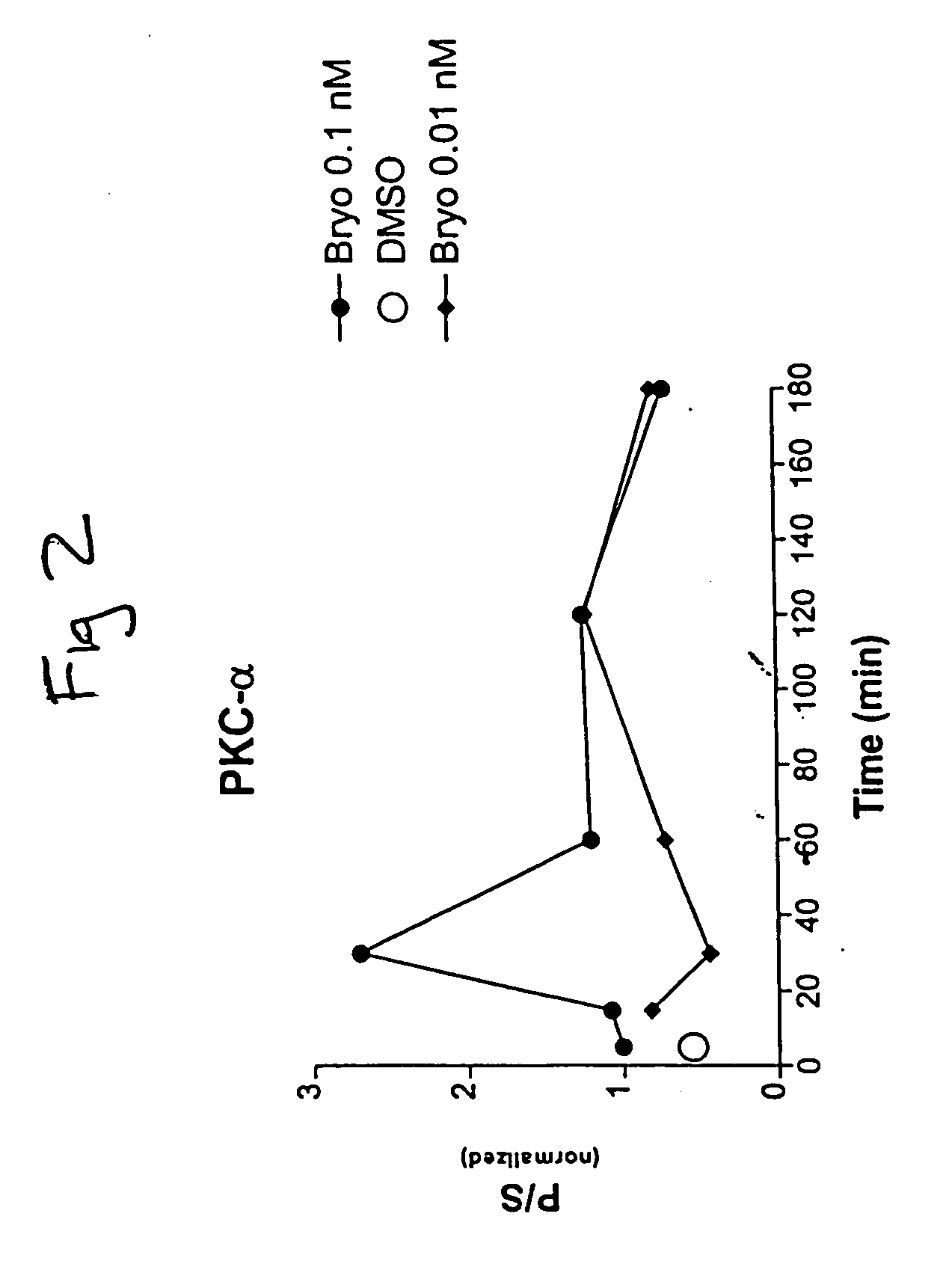Methods for Alzheimer's Disease treatment and cognitive enhancement
a technology of alzheimer's disease and treatment methods, applied in the direction of antinoxious agents, drug compositions, metabolic disorders, etc., can solve the problems of not addressing the progression of the disease, ineffective clinical use and other types of cognition disorders, and improving symptomatic and transient cognition
- Summary
- Abstract
- Description
- Claims
- Application Information
AI Technical Summary
Benefits of technology
Problems solved by technology
Method used
Image
Examples
example i
[0085] Materials And Methods
[0086] Cell Culture
[0087] Cultured skin fibroblasts were obtained from the Coriell Cell Repositories and grown using the general guidelines established for their culture with slight modifications (Cristofalo & Carptentier, 1988; Hirashima et al., 1996). The culture medium in which cells were grown was Dulbecco's modified Eagle's medium (GIBCO) supplemented with 10% fetal calf serum (Biofluids, Inc.). Fibroblasts from control cell lines (AC), cases AG07141 and AG06241, and a familial AD (FAD) case (AG06848) were utilized.
[0088] PKC Activators
[0089] The different tissue distributions, the apparently distinctive roles of different isozymes, and the differential involvement in pathology make it important to use pharmacological tools that are capable of preferentially targeting specific isozymes (Kozikowski et al., 1997; Hofmann, 1997). Recent research in the medicinal chemistry field has resulted in the development of several PKC activators, for instance ...
example ii
[0101] The effect of PKC activators on cognition was demonstrated by the Morris Water Maze paradigm. In the present example, rats were injected intraventricularly with bryostatin-1 and trained for 4 days (following standard protocols). Retention was assessed on the 5th day. Learning was measured as the reduction of escape latency from trial to trial, which was significantly lower in the treated animals. Acquisition of memory was measured as time spent in the relevant quadrant (5th day). Memory or retention was significantly enhanced in treated animals, compared to sham injection animals (see FIGS. 4 through 5(a)-5(c)). The rats treated with bryostatin-1 showed improved cognition over control rats within 2 days of treatment (see FIG. 4). Bryostatin-1 is capable of being used at concentrations to improve cognition that are 300 to 300,000 times lower than the concentration used to treat tumors. The above example further shows that cognitive ability can be improved in non-diseased subje...
PUM
| Property | Measurement | Unit |
|---|---|---|
| diameter | aaaaa | aaaaa |
| pH | aaaaa | aaaaa |
| pH | aaaaa | aaaaa |
Abstract
Description
Claims
Application Information
 Login to View More
Login to View More - R&D
- Intellectual Property
- Life Sciences
- Materials
- Tech Scout
- Unparalleled Data Quality
- Higher Quality Content
- 60% Fewer Hallucinations
Browse by: Latest US Patents, China's latest patents, Technical Efficacy Thesaurus, Application Domain, Technology Topic, Popular Technical Reports.
© 2025 PatSnap. All rights reserved.Legal|Privacy policy|Modern Slavery Act Transparency Statement|Sitemap|About US| Contact US: help@patsnap.com



